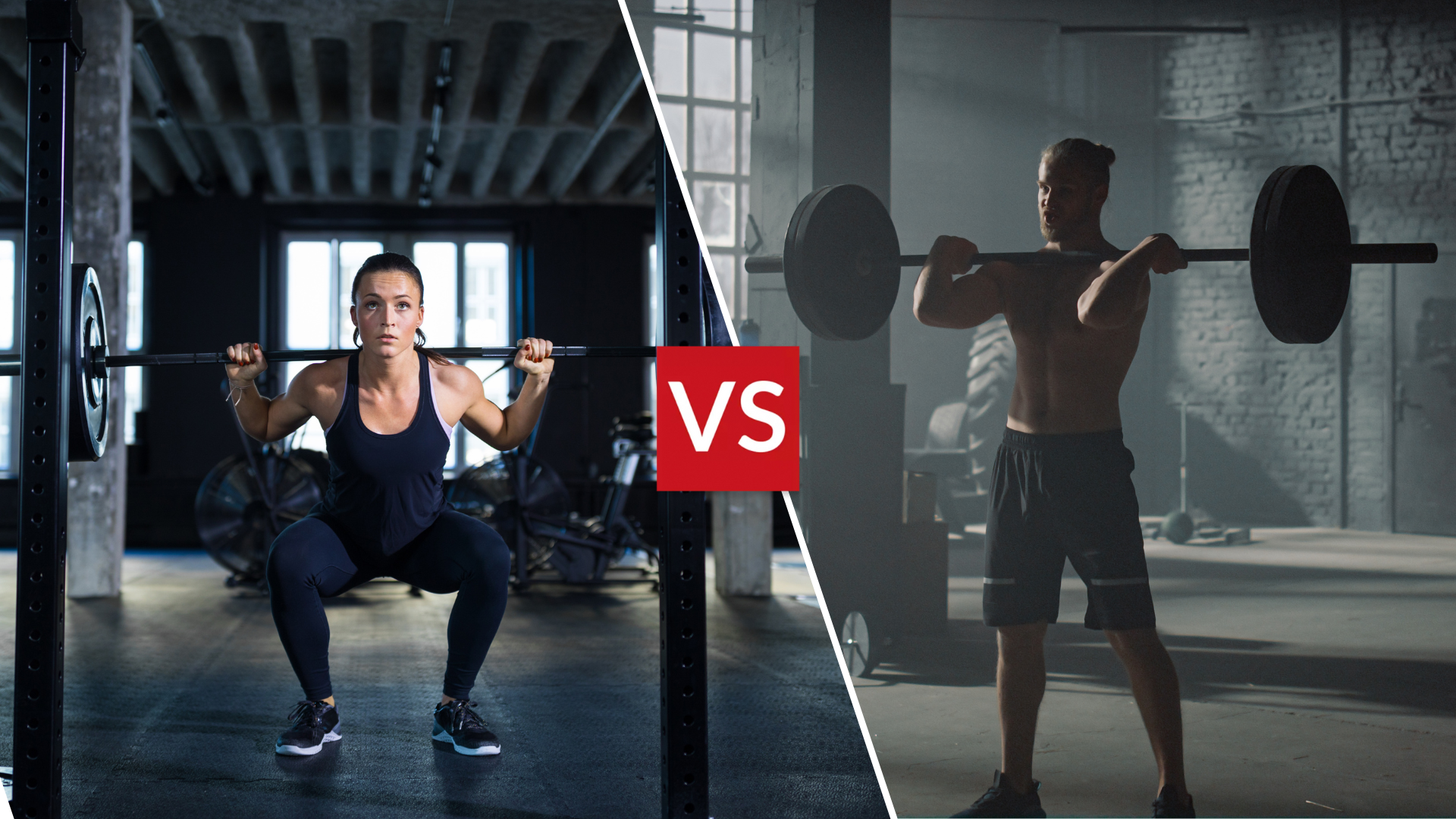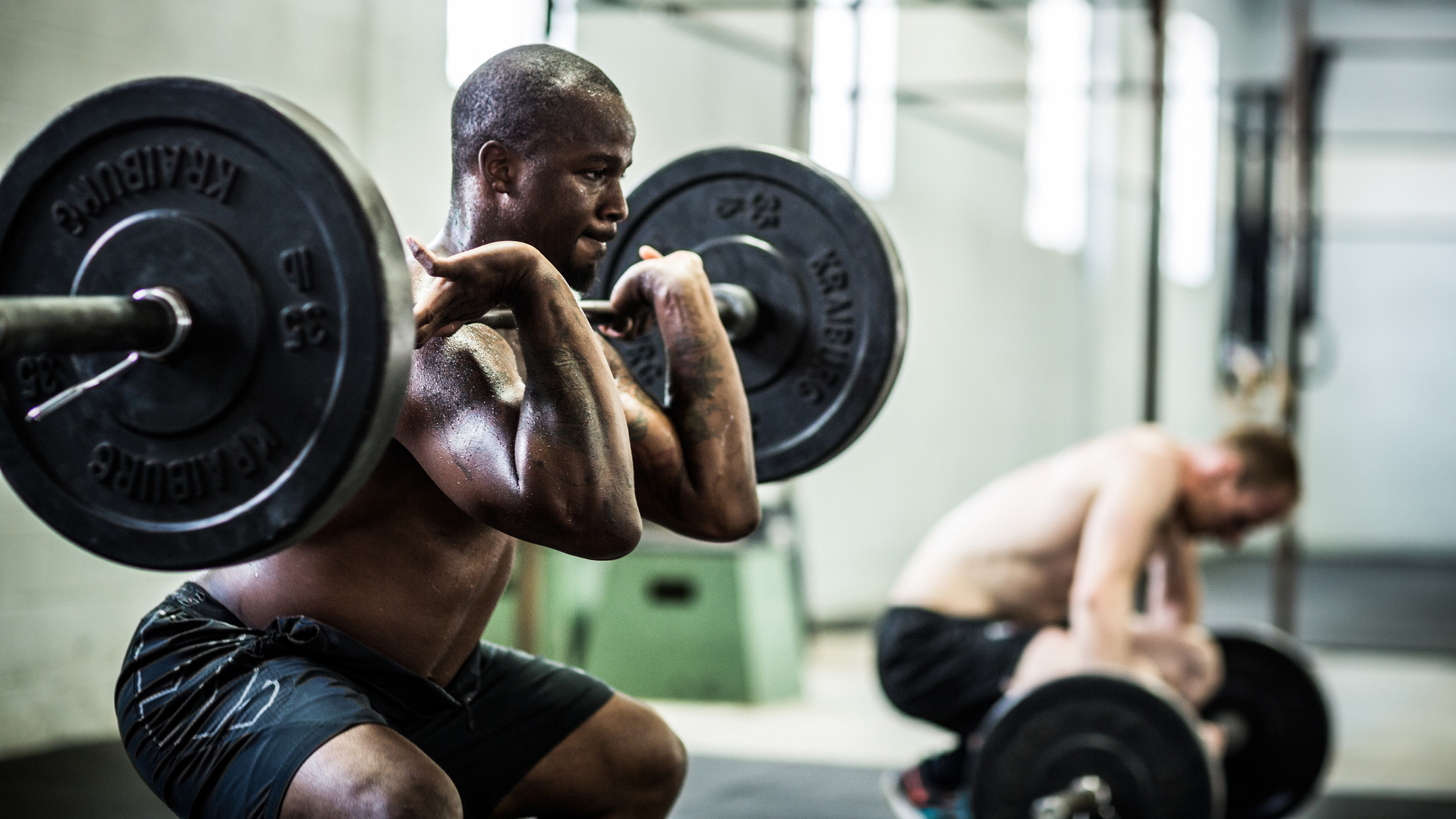

You may love training arms, but we all know leg day is essential for building a stable physique to help us conquer everyday activities (plus, no one wants chicken legs). Our lower body houses some of the largest muscles, like the gluteus maximus, and working them not only burns more calories (as they use up more energy), but they also stimulate a large release of hormones that help you get stronger and build muscle.
We know squats are hailed as the holy grail when it comes to leg day, with the barbell front squat and back squat being two of the most popular variations (the latter more so). But which of these two compound exercises is best for building strength and size in our pins - do we benefit more from placing the barbell on our front or back? With the help of an expert, we answer that very question.
Are back squats good for you?

Yes, very! “Barbell back squats are a very effective exercise, perhaps the most effective, when it comes to building lower body strength,” says Sean Murphy, Certified Personal Trainer and Global Personal Training Director at Ultimate Performance.
This is the type of squat you’re probably most familiar with – where you squat with an Olympic barbell and weight plates resting across your back. Of course, squats can be performed with a pair of dumbbells, a kettlebell or even a resistance band. However, barbell back squats are a staple in strength training workouts, particularly weightlifting and powerlifting.
“Rather than the quad-dominant front squat, the barbell back squat targets your glutes and your hamstrings more directly,” says Sean, as well as your core and lower back. However, he says there’s more to them than just building strength and muscle, they’re also an excellent calorie-burner as they get your heart racing.
They're also easier to perform than front squats as the positioning of the bar is far more comfortable. "That means you can go significantly heavier on a back squat than you can on a front squat,” adds Sean.
What about front squats?

Front squats are less popular than its sister squat and this is predominantly because it’s a far more challenging exercise. Instead of the barbell being on your back, you balance it on the front of your body by either crossing your arms and resting the bar between your biceps and front of the shoulders. The other way is flexing your elbows and placing your fingertips under the bar (like in the picture above), which requires very good wrist mobility.
Sign up to the T3 newsletter for smarter living straight to your inbox
Get all the latest news, reviews, deals and buying guides on gorgeous tech, home and active products from the T3 experts
“This is because it requires the lifter to maintain a very upright torso and core, and a very strong brace, throughout the move,” says Sean. “If the weight is too heavy, or you have problems maintaining such an erect torso, then your shoulders will hunch forward during the move, which could cause you to totally lose your grip and control over the bar or put too much strain on the lower back.”
The risk of injury with front squats is therefore much higher, but don’t let this put you off, especially if you’re trying to grow your quads. It actually targets your quads more than a traditional back squat and this is down to the positioning of the bar being placed on the front of the body. “Because you are forced to maintain such an upright posture during the move to stop your shoulders hunching forwards, it also puts less pressure on your spine," says Sean.
Which is better: front or back squats?
Front squats do hit your quads more than back squats, but that doesn’t necessarily mean it’s the better squat for you. Experience, mobility and any previous/existing injuries all need to be taken into account.
“I would personally recommend back squats over front squats in the first instance,” says Sean. “Front squats require a lot of co-ordination, balance, skill and flexibility to perform correctly. Whilst they do hit the quads more directly, a back squat is probably the better overall exercise for lower body strength because it hits so many different muscle groups such as the glutes, hamstrings, adductors, calves, and quads.”
Rest assured, if you can’t do front squats you will still build serious strength in your lower body doing back squats. Especially as they’re easier to build up to a heavy weight, so you have a better chance of progressive overload, which is essential for increasing strength and muscle.

Bryony’s T3’s official ‘gym-bunny’ and Active Staff Writer, covering all things fitness. She recently completed her Level 3 PT qualification with the PFCA to bring a deeper understanding of training techniques, fitness trends, and wellness advice to her writing. In her spare time, you will find her in her natural habitat - the gym - where her style of training is a hybrid of bodybuilding and powerlifting. Bryony loves writing about accessible workouts, nutrition and testing innovative fitness products that help you reach your fitness goals and take your training to the next level.

